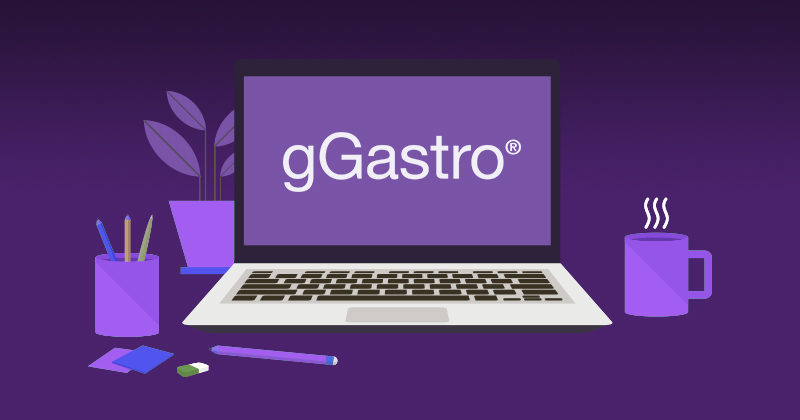Rev Up Practice Productivity

Why Choosing the Right Software Technology for Your GI Practice Can Help Support Your Growth Trajectory
In 2018, the American Medical Association uncovered a notable shift in medical practices: the number of doctors who were employed by a health system or other large corporation exceeded those in independent practices for the first time.
In 2020, a survey by The Physicians Foundation found that nearly 16,000 practices closed their doors amid the pandemic and another 4 percent are projected to shutter within the next year.
While the stress and circumstances of the pandemic may be partially to blame for so many closures in 2020, overall, the financial challenges of practice ownership have many doctors calling it quits on ownership.
When you are an independent practice, employing strategies that support growth while also reducing overhead is vital to survival. There is little room for error and it pays to invest in changes that will support productivity in the long run—it’s key for growth.
Reed Tinsley, CPA, CFP, a medical practice consultant in Houston, Texas told Medical Economics in February, “[i]n some cases even small improvements in revenues and operating efficiencies can make the difference between staying independent and selling or merging a practice.”
Making Change to Support Growth
It can seem like a monumental task to change EHR software, but choosing the right software technology for your practice can support a lot of small changes that can make a big difference in growth trajectory. For gastroenterologists, the best solution is one that can adapt to the various practice settings common to the field.
According to Technology Advice, a software research site, “[s]pecialists often simply need less functionality so they can do more, faster. If an EHR system has charting templates for that specialty, the physician will spend less time sorting through unnecessary functions and more time with the patient.”
For example, an EHR with mobile tasking means that you can stay on top of your schedule and to-do list wherever you go. Making rounds at the hospital or running between your office and ASC? Your EHR is in the palm of your hand. Just staying connected can be a significant driver of productivity.
The right EHR can also support getting more patients in the door without driving up overhead costs. Systems that support schedule management and ease patient-provider communication can help prioritize tasks and avoid hiring additional staff for redundant tasking, especially when volume is up. The right tools can also help fill scheduling gaps, supporting a reduction in cancellations and no-shows. Features of an EHR system that allow you to aggregate data and track workflow studies can be instrumental in transforming the patient experience. A great patient experience is often worth talking about or tweeting about—word of mouth advertising is a great way to grow your business.
Investing in the Future
A lot of independent practices fear that initial investment in technology. It can feel like a gamble.
However, it’s only a gamble if you don’t take the time to evolve a strategy for each stage of growth. Ask yourself, what are the biggest operational pain points that your practice is currently facing and what is their impact to your overall practice functionality?
Billing, coding, and collection tasks are the three biggest contributors to lost revenue for physicians. In fact, a 2017 study found that U.S. physicians lose an average of $125 billion annually to errors in these tasks.
A fully-integrated EHR and practice management system can eliminate expensive bridges between systems and cut down on the number of tasks, helping to reduce the possibility of error. These can be the first step in creating change that will help a practice to uncover places where they are experiencing revenue loss. Step two might be investing in integrated add-ons that simply and quickly provide an estimate of a patient’s out-of-pocket costs before the appointment. Other tools will allow patients to set up a payment plan or pay their bill from their phone or on the web.
At Digestive Health Specialists, gInsights™ gives Director of Finance Cindy Fruge new command over the numbers. She says, “With gInsights, I have the ability to manipulate data based on the specific criteria we’d like to know, which simplifies our reporting and saves me time. It also gives me the ability to drill down to the detailed information that we don’t necessarily see on a daily basis and allows me to look at our performance more efficiently.”
Growth Success
It can seem like a leap of faith to make a big investment when you are a new practice or a practice with little room for extra spending.
The gGastro Suite of Solutions is more than a technology suite. It is a system of products, services, and people–highly specialized for the business of gastroenterology–that will support you in every step toward growth.
Dr. Arnold Levy, co-founder of Capital Digestive Care told Becker’s ASC, “The entire suite of [gGastro] products allows GI groups to do things better clinically and businesswise, resulting in a better experience across the board for patients, employees and providers. . . [gGastro] has the best GI product on the market and the company is not sitting still; further product enhancements and improvements are on the way.”
Identify your operational pain points now and find step-by-step solutions. Allow the GI-specialized business professionals of Modernizing Medicine® Gastroenterology support you in mapping a plan for growth and success.




